6 Awesome Death Valley Sand Dunes – Your Complete Guide
On our first-ever drive into Death Valley National Park, our first “pull the car over” moment came as we passed the Mesquite Sand Dunes. This extraordinary landscape looked like something from the movies of an Arabian desert. And it launched our lifelong fascination with Death Valley National Park.
But there are even more dunes in the fantastic place called Death Valley. It’s one of the best things about this park and a feature we try to visit on each visit we make to the park.
We’ll take you through the notable dunes of this national park in this post. We’ll cover the highlights of six different dune areas. If you’re interested in exploring sand dune landscapes, we’ll provide the highlights to help you explore the dunes of Death Valley National Park.
The Places Where We Go contains affiliate links and is a member of the Amazon Services LLC Associates Program. As an Amazon Associate, we earn from qualifying purchases at no extra cost to you when you purchase using one of these Amazon links. Read our disclaimer and privacy policy for more information.

Does Death Valley Have Sand Dunes?
Death Valley National Park is the largest of all the national parks in the lower 48 contiguous United States. It offers many unique geographic attractions, including the lowest place in the lower 48 states. Here are the Death Valley Sand Dunes we’ll explore in this post:
- Mesquite Flat Sand Dunes
- Eureka Dunes
- Ibex Dunes
- Panamint Dunes
- Saline Valley Dunes
- Amargosa Dunes
About the Sand Dunes in Death Valley
The vast area of land in Death Valley National Park is breathtaking. That’s one of the things we love about this national park. You can be on a mountain or overlook; as far as the eye can see, it’s all Death Valley National Park.
Yet, in this desert wilderness, less than one percent of the 3.4 million acre land area is covered by dunes. They’ve been formed over millions of years with wind blowing through this area.
You might think a pile of sand is the same as any other. But did you know Death Valley National Park has three different types of dunes?
Crescent Dunes: Most of the dunes in Death Valley are crescent dunes. These are known for their width and appearance, which resemble a crescent moon. Crescent dunes are formed from uni-directional winds.
Linear Dunes: These dunes are among the longest of the three types of dunes. They have ridges that can meander for over a mile. While linear dunes are known for their length, their width is narrow within their span. You can often find this style of dune parallel to other linear dunes.
Star-Shaped Dunes: These dunes are formed from winds that pass in many directions. This wind effect causes the dunes to diffuse outward from a central point. These star-shaped dunes are among the tallest dunes in the world. China is home to star-shaped dunes that approach 1,600 feet in height.
Death Valley Sand Dunes Complete List
We have five dune areas within Death Valley National Park, plus one bonus area nearby Death Valley to explore with you.

Mesquite Flat Sand Dunes
The most popular dunes in Death Valley National Park are the Mesquite Flat Sand Dunes. These dunes, located just off Highway 190 east of Stovepipe Wells, are extremely easy to visit. Nearby is a general store in Stovepipe Wells for food and supplies. The Mesquite Flat Sand Dunes were the first dunes we ever visited in Death Valley, and we were impressed with the unique landscape.
At the dunes, you’ll find a decent-sized parking lot off the highway. You can admire the dunes from a distance or step into the landscape to walk on the sandy surface.
The Mesquite Flat dune field area holds the most extensive collection of dunes in Death Valley. The tallest dune in this section is nearly 100 feet tall.
A distinct feature in this area is the Mesquite Trees, which give this section its name. These trees provide shelter for wildlife.
There is an area here where you can see the polygon-shaped cracked clay of an ancient lake bed.
Exploring Mesquite Flat Dunes
Since the area constantly has winds that blow the sand, you won’t find a marked hiking trail. From the parking lot, set your sights on a particular dune and head out for exploration. It’s a fun place to walk and run over the dunes here.
- Trail length: 2.8 miles round trip
- Elevation Gain: 206 feet
- Best time to visit: Sunrise and sunset
- Types of dunes: Crescent, linear, star
- Snowboarding: Allowed
- Hiking permit requirement: No permit is needed
Trailhead address: California 190, Death Valley National Park, CA 92328
Trailhead coordinates: 36.6062, -117.1150 (36° 36′ 22.3″N 117° 06′ 54.0″W)

Tips for Exploring Mesquite Flat Sand Dunes
- Bring shoes, as the sand can become extremely hot.
- Bring a sandboard to sled down the dunes.
- Pack plenty of water
While most resources on the internet list Mesquite Flat Sand Dunes as the only dunes in Death Valley that permit sandboarding, you can also take your board to Saline Valley Dunes.
For an additional nearby adventure, consider the Mosaic Canyon Hike. This 4-mile out-and-back moderate-to-difficult trail is reached in Stovepipe Wells Village.
Watch our YouTube from Mesquite Flat Sand Dunes
Eureka Sand Dunes
The Eureka Sand Dunes are located in a remote northern section of Death Valley. They are situated in the Eureka Valley at a 3000-foot elevation area. The dune area here is a section of three square miles.
Visitors who venture here call these the most impressive of the multiple dune areas within Death Valley National Park. Set against the backdrop of Last Chance Mountains, the dunes appear small against the limestone wall of the mountains, which rise 4000 feet over the valley floor. You’ll find the tallest dunes in California and possibly North America at this location. The highest dune rises nearly 700 feet.
Geologists estimate the Eureka dunes have been here for nearly 10,000 years. This unique habitat creates a place for a collection of animals, insects, and plants not found elsewhere on Earth.
Exploring Eureka Sand Dunes
The Eureka Dunes are difficult to see as they are inaccessible from a paved road. There is a graded dirt road, which you’ll need to travel anywhere from 20 to 40 miles, depending on your starting point.
Head north on Scotty’s Castle Road to reach the Eureka Sand Dunes from CA-190. Turn left on the road to Ubehebe Crater. From the Ubehebe Crater Road, continue on a graded gravel road for approximately 45 miles south of this location to reach the dunes. This route is accessible by most standard vehicles.
The other route originates from the town of Big Pine and includes 28 miles on a paved road followed by another 21 on graded dirt. The last stretch, a 10-mile journey on the narrow South Eureka Road, is the same for both routes. Be aware that access can be restricted or completely closed during adverse weather conditions. Remember, this journey offers no water or services, so come prepared.
Due in part to their height, these steep dunes are challenging to traverse.
- Trail length: 3.5 miles roundtrip
- Elevation: 616 feet
- Best time to visit: Sunrise and sunset. As the sun drops in the west during the late afternoon, you’ll see unique colors in this landscape, and the dunes take on a purple shade.
- Snowboarding: Not allowed
- Off-roading: Not allowed
Tips For Visiting Eureka Sand Dunes
Check weather conditions before your visit. Winter weather often causes road closures in this area. Flash floods are a reality in Death Valley and can cause tremendous damage to the roads.
Fuel up your car before traveling to the Eureka Sand Dunes, as this area has no gas station.
Read our article about Death Valley Gas Stations
No services or water sources are near the Eureka Sand Dunes, so bring plenty of water during your visit.

Plant and Animal Life at Eureka Sand Dunes
Despite this area’s desolate appearance, plant and animal life is found near the dunes. These dunes can hold an impressive amount of water – similar to how cactus plants retain moisture. With a location at the western base of a mountain range, this area receives more rainfall than any other Death Valley dunes. The conditions create a unique environment for plant and animal life, including several species found nowhere else on Earth.
The Eureka Dunegrass (Swallenia alexandrae) is a threatened species found nearby in the higher elevations at the dunes. It is listed as a threatened species.
The Eureka Evening Primrose (Oenothera avita eurekensis) is found in this area. This flower only blooms in the evening and provides shelter from the fierce heat of bugs.
The Shining Milkvetch (Astragalus lentiginosus micans) is found at Eureka Sand Dunes and is on the endangered species list. Its adaptation to the area includes the ability to reflect light and heat with its silvery hairs to keep moisture. This plant is a candidate for the Endangered Species List.
The Eureka Sand Dunes Are Musical
Did you know that sand dunes can make music? The Eureka Sand Dunes may not have an album on Spotify, but they are indeed musical.
With the proper conditions (primarily dry sand), you can hear a bass-centric resonance that almost sounds like the lowest notes played on the pedalboard of a pipe organ. This desert phenomenon is called singing sand. It occurs through the friction of sliding grain against the dunes.
Ibex Dunes
The Ibex Sand Dunes are the southernmost dunes in Death Valley National Park. They are also the most visited dunes in the park after the Mesquite Flat Sand Dunes.
The Ibex Dunes differ from other dunes in Death Valley. There is not a continuous area of dunes. Rather, there are specific patches and mounds of sand in a nearly two-mile stretch here.
Hike about one mile from Saratoga Springs Road to access the Ibex Dunes. The remains of an old talc mine are at the base of Saddle Peak Hills. From here, there is an overlook of Ibex Dunes from the east.
Exploring Ibex Sand Dunes
- Trail length: 5.7 miles roundtrip
- Elevation gain: 485 feet
- Snowboarding: Not allowed
- Off-roading: Not allowed

Panamint Dunes
You can see the Panamint Dunes in the distance when driving on CA-190 into Death Valley National Park from the western entrance.
These dunes are unique in Death Valley in that they are formed on a slope versus in a valley. The Panamint Dunes are star-shaped.
Exploring the Panamint Sand Dunes
Getting to the Panamint Dunes requires travel on a reasonable five-mile dirt road. From CA-190, travel north on an unmarked dirt road 2 miles east of Panamint Valley Road. Travel 5 miles past Lake Hill until the road ends. It’s about a 3-mile hike from this area to get to the dunes.
Once at the dunes, accessibility is more difficult than some of the other dunes in Death Valley. If you reach the top, you’ll be rewarded with spectacular views.
- Trail length: 7 miles roundtrip
- Elevation gain: 859 feet
- Best time to visit: October through April
- Snowboarding: Not allowed
Bring a first aid kit, sun block, and water when visiting Panamint Sand Dunes.

Saline Valley Dunes
The least visited dunes in Death Valley are the Saline Valley Dunes. Set against a backdrop of the Inyo Mountains, these are located at the edge of a salt flats area. If you are lucky enough to see these dunes in person, odds are you may be the only visitor here.
An ancient salt lake of Saline Valley provides the environment for forming dunes in this area. Of the various dunes in Death Valley National Park, these are at the lowest elevation.
Exploring the Saline Valley Sand Dunes
You can reach the Saline Valley Sand Dunes from CA-190 on the park’s west side. Travel north on the Saline Valley Alternate Route for 5 miles to reach the junction of Saline Valley Road. Then, travel for 40 miles to reach the dunes.
Travel to the Saline Valley Sand Dunes requires a rough drive. The road is covered with many sharp rocks, so traversing the path is likely more accessible with a 4WD high-clearance vehicle. The road is open year-round, though checking road conditions before making this trip is highly recommended, especially during winter.
- Best time to visit: October through May
- Snowboarding: Permitted
We recommend that you check in with park rangers before setting off on a visit to the Saline Valley Sand Dunes. Given the long distance and lack of services on the way, you’ll want someone to know you traveled out here in case you get stranded.

Amargosa Sand Dunes
One additional set of dunes is not inside Death Valley National Park, but they are close enough to be included in this listing. The Amargosa Sand Dunes are just across the border from the park in the Amargosa Valley in Nevada.
In an area of five square miles, the Amargosa Dunes include the famous “Big Dune” that rises over 500 feet.
There is more access to recreational activities at the Amargosa Dunes versus those inside Death Valley National Park. This is a great place to visit if you want to ride your Dune Buggies on dunes.
The Amargosa Sand Dunes are located between Beatty and Pahrump along US 95. Find the Area 51 Travel Center on Highway 95. From that junction, travel north about 13 miles and turn left on Big Dunes Road. Continue for six miles to reach the dunes. The road becomes more sandy the closer you get to the dunes. A 4WD vehicle is nearly essential for safe travel here.

What Creates the Dunes in Death Valley?
Creating the magnificent sand dunes in Death Valley National Park takes three elements – land, sand, and wind. Over millions of years, the landscape has experienced significant erosion into canyons. This provides a tremendous source of sand.
The canyons in the park are at a relatively higher elevation. They are collection points for sand as water and eroded elements wash through these canyons during periods of rain and flooding.
And with winds a constant feature in this landscape, the sand is blown into areas surrounded by mountains. This gives us the perfect conditions for sand dunes.
Get Our Free Death Valley Packing Checklist
Sledding and sand boarding on Death Valley Sand Dunes
You don’t need to wait for snowfall in the mountains to experience sledding and downhill boarding. Death Valley National Park offers some of the best sandboarding in the United States. While there are several dune sites in this national park, sandboarding, sand sledding, and sand skiing are only permitted at the Mesquite Flat Sand Dunes and on the Saline Valley Dunes.
The Mesquite Dunes are pretty steep, with the highest dune rising about 100 feet from ground level.
Bring a small board with bindings. Because sand has quite a bit more friction than snow, a small board will keep the friction levels down. And don’t forget to wax your board. That will also reduce friction and help you ride faster.
Get your adrenaline rush on the dunes at Death Valley National Park.
Sledding and sand boarding equipment
You’ll need to bring your gear as Death Valley National Park has no sandboard rental facility.
Top Rated Sand Boards
Browse more sandboards and sleds here
You might also want to bring sandboard wax for a smooth ride.
Sledding and Sand Boarding Tips and Essential Information
Avoid cardboard, plastic saucers, and plastic sleds, as these don’t slide well down the dunes.
Off-roading is not allowed at the dunes. Plan to walk about one mile from the parking lot to reach the dunes for your sandboarding adventure.
Only sandboard on areas that do not have vegetation growing
Bring plenty of water.
Best time of year for sandboarding: Early Spring and Fall
Photography at Death Valley Sand Dunes
If you are a photography enthusiast, the Death Valley Sand Dunes should be on your bucket list. These dunes offer unique and breathtaking opportunities for photographers of all levels.
The landscape of the Death Valley dunes is a photographer’s wonderland. With shifting shapes and textures, it’s one of the best places to experiment with light and shadow. The dunes provide a great place to practice photographic composition. Your subject includes curves, diagonals, and unique patterns.
The best time for photography at Mesquite Flat Sand Dunes is early morning. Nighttime winds will have resurfaced the dunes and covered the foottracks from the previous day. Sunrise provides excellent lighting to capture the shadows set against the lit portions of the dunes. The lighting conditions create stunning contrasts between light and shadow, which adds depth and texture to your photographs. The soft light during sunrise also gives a warm tone to the images, making them even more visually appealing.
One of the most unique aspects of Death Valley Sand Dunes photography is the ever-changing patterns on the dunes themselves. As the wind blows across the dunes, it creates ripples and curves that are constantly shifting. This allows for endless possibilities when composing your shots and capturing different perspectives.
In terms of colors, the Death Valley Sand Dunes offer a diverse range. At sunrise, you can capture warm orange, pink, and red tones as the sun rises over the horizon. During sunset, the colors shift towards cooler tones such as purples, blues, and violets. This contrast of warm and cool tones creates a stunning color palette for your photographs.
Furthermore, the dunes also offer unique opportunities for black-and-white photography. The stark contrasts between light and shadow on the dunes can create dramatic monochrome images that are striking and timeless.
Pay attention to footprints and aim for photography on the sections where no steps are imprinted in the sand.
Photography gear tips for the dunes
- Pack weatherproof camera gear
- Use a clear lens filter
- Select a single lens to use at the dunes – ideally, a lens without external moving elements (most prime lenses and certain zoom lenses)
- Avoid changing lenses in the wind
- Bring a tripod

Death Valley Sand Dunes Are Protected
When visiting the dunes in Death Valley National Park, knowing they are protected wilderness areas is essential. As a result, off-road vehicles are not permitted on the dunes. Sandboarding is prohibited except at Mesquite Flat Sand Dunes and Saline Sand Dunes.
The National Park Service asks visitors to stay on paved or unpaved roads when visiting the dunes to help protect this fragile part of the desert.
Death Valley Gas Stations
You never want to run out of gas, especially in Death Valley National Park. Read our post about Death Valley Gas Stations to plan your fuel strategy before you arrive.
Death Valley Sand Dunes Map
This map shows that the dunes in Death Valley National Park are pretty spread out. Plan your road travel before you arrive, knowing that it can take hours to reach all the dunes.

Map Legend
1: Mesquite Flats Sand Dunes
2: Eureka Dunes
3: Ibex Dunes
4: Saline Valley Dunes
5: Panamint Dunes
When is the Best Time to Visit Death Valley Dunes?
The cooler months of the year are a great time to visit Death Valley dunes. You’ll want to focus on November through March. Be aware that winter months can be extremely cold. Our experience has been that travel to Death Valley during this time is also less crowded (aside from the weeks of Christmas break). Visiting Death Valley during cooler temperatures will give you more time to explore the great outdoors.
Exercise extreme caution when visiting in the summer months. Death Valley has recorded blistering temperatures and is the hottest place on earth. With minimal rainfall, it is also usually the driest place on earth.
What to Wear When Visiting Death Valley Dunes?
When planning a Death Valley Sand Dunes visit, it’s crucial to dress appropriately for the extreme conditions. Here’s a guide to essential clothing items you should consider:
- Breathable, Light-Colored Clothing: Choose loose-fitting, light-colored garments that reflect sunlight and allow your body to maintain a cooler temperature. Materials like cotton, linen, or moisture-wicking synthetics are ideal for facilitating evaporation and keeping you dry.
- Long Sleeves and Pants: Despite the heat, long sleeves and pants can protect your skin from the sun’s intense rays and prevent sunburn. They also protect against scratches from rough vegetation or the sand itself.
- Sun Hat with a Brim: A wide-brimmed hat will provide shade and protect your face, ears, and neck from sunburn. Hats with vents are also great for additional airflow.
- Sunglasses with UV Protection: High-quality sunglasses will protect your eyes from the glare of the sun reflecting off the bright sand, and they are vital for UV protection.
- Sturdy Footwear: Sand temperatures can vary drastically depending on the time of year and the time of day. Closed-toe, breathable hiking shoes are generally recommended to protect against hot sand. Sand can be traversed in cooler temperatures with sturdy sandals or even barefoot. However, always test the sand temperature first to avoid burns.
- Socks: If you opt for closed-toe shoes, wear thick socks that can provide insulation from the hot sand and comfort during walking.
- Bandana or Buff: These can cover your neck or face in case of sandstorms or when the sun is particularly harsh.
- Lightweight Jacket or Windbreaker: The desert can get windy, and temperatures may drop significantly if you stay past sunset. A lightweight jacket will help protect against the wind and cooler temperatures.
Remember, the key to comfort in Death Valley is to wear clothing that can adapt to fluctuating temperatures and protect you from the sun. Always prioritize sun protection and hydration above all else.
Getting to Death Valley National Park
You’ll need a car to get into Death Valley. There is no public transportation for the park nor shuttles that you may see in other National Parks.
Vehicle options include driving your vehicle, renting a car, or booking a tour that will take you to Death Valley. Of course, if you are focused on reaching the various dunes, your best bet is to travel in your vehicle. This will let you keep to a schedule that works best for you.
Tours and Tickets to Experience Death Valley National Park
The closest airport is Las Vegas McCarren. This is about a two-hour drive from the Furnace Creek Visitor Center.
Death Valley National Park – Location and Distance
- Distance from Las Vegas: 129 miles, 2 hours
- Distance from Los Angeles: 215 miles, 4.5 hours
- Distance from San Francisco: 457 miles, 8.5 hours
There is an entrance fee to get inside Death Valley National Park. You can either pay a one-time visitor fee upon arrival. If you plan to visit several national park sites during the year, the extra cost of an annual pass may be your best bet. You can purchase this at the park’s ranger stations or visitor center.
Roads in Death Valley
The main east-west road through the park is CA Highway 190.
The main north-south roads in the park are North Highway and Badwater Road (CA 178)
Paved roads from the East Side:
- CA 190 from Death Valley Junction, CA
- SR 374 from Beatty, NV
- CA 178 from Shoshone, CA
- SR 267 from US 95, NV
Paved roads from the West Side:
- CA 190 from Olancha, CA (SR 136 from Lone Pine, CA)
- SR 178 (Panamint Valley Rd) from Trona, CA
If traveling on unpaved dirt and gravel roads, be sure you have an inflated spare tire in good condition with your vehicle. You never know when you’ll get a flat tire, so be prepared, especially in this harsh environment.
IMPORTANT: Check the Death Valley National Park website for current road conditions. Some roads may be closed during the time of your visit.
Recommended Lodging in Death Valley National Park
Nestled in the vast expanse of Death Valley, The Inn at Death Valley stands as an oasis of luxury and comfort. With its rich history dating back to 1927, this AAA Four Diamond-rated Inn underwent a $100 million renovation, artfully blending its storied past with modern amenities.
Imagine sipping your morning coffee on the terrace, overlooking the desert salt pans and the majestic Panamint Mountains, or unwinding by the spring-fed pool as the sun sets, painting the sky in brilliant desert hues. The Inn’s elegant dining options promise a culinary journey featuring fresh, regional flavors as unique as the surrounding landscape. The Inn at Death Valley offers a sophisticated retreat that promises an unforgettable experience.
Death Valley National Park – Know before you go
✈️ Closest Airport: Las Vegas McCarren (LAS)
⏰ Time Zone: Pacific Standard Time (GMT-8)
- Please be considerate of the Leave No Trace Principles to preserve the beauty of this place.
- Cell phone coverage can be limited to non-existent at the various dune locations, so don’t rely on your phone for communication.
- Bring proper footwear. Extreme heat makes footwear essential – even sandals can be uncomfortable in scorching weather. In the winter and cool months, the sand can feel surprisingly cold.
- Bring plenty of water. You can get surprisingly tired hiking on the sand.
- Be prepared with sun protection. Sunscreen helps in this environment where there is no shade, and the sun’s rays reflect off the sand.
- Bring a headlamp if you plan to hike in the afternoon. When the sun sets behind the mountain peaks, darkness arrives quickly.
- Be on watch for snakes (including sidewinder rattlesnakes), especially at sunset and after dark.
What Other Places Should You Visit in Death Valley?
Death Valley is a spectacular place that sits between two mountain ranges. Our favorite destinations in Death Valley besides the dunes include:
- Artist’s Pallette – this short drive rewards with colorful views
- Badwater Basin – it’s the lowest point in North America at 282 ft (86 m) below sea level.
- Racetrack Playa – it takes some planning to get here, but it’s worth the effort to see the mysterious moving rocks.
- Ubehebe Crater – a large volcanic crater that is 600 feet deep and half a mile across
- Zabriskie Point – drive into the small parking lot and take a short walk to this iconic vista and favorite place for visitors to view sunrise and sunset.
Hiking in Death Valley
Dante’s View – you’ll see magnificent views and can spot Telescope Peak, the highest point in Death Valley.
Read our Guide to Dante’s View in Death Valley
Golden Canyon to Red Cathedral – 3 miles out and back moderate trail
Listen to our Death Valley Podcast Episodes
Recommended Reading For Your Death Valley Trip
Exploring the dunes in Death Valley is among our favorite things to do when we visit this National Park. We hope you enjoyed this post and are ready to create personal memories at the various Death Valley Dunes.
Check out these other resources to plan your Death Valley road trip:
Death Valley Gas Stations Guide to Keep You On The Road
One Day Death Valley Itinerary – 9 Awesome Stops
Thanks for reading this article. We’ll see you at the places where we go.
Julie & Art
More Articles on National Park Experiences

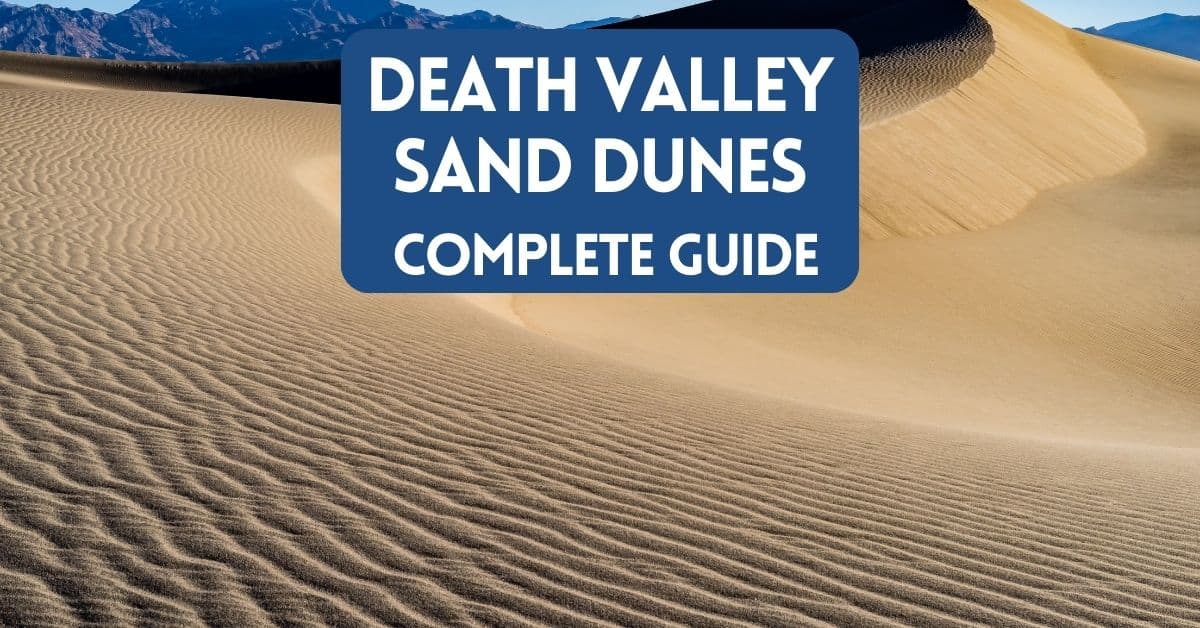
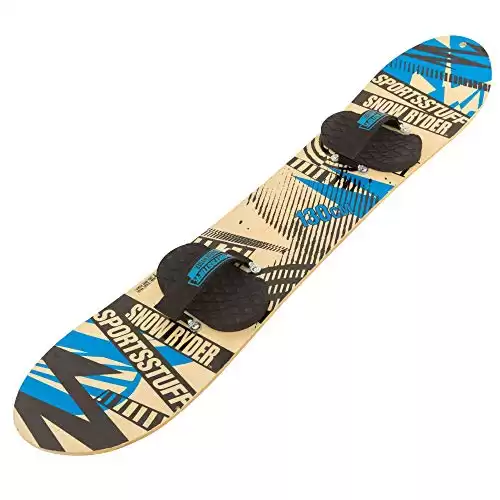
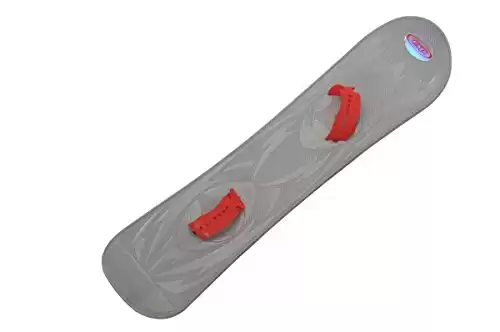
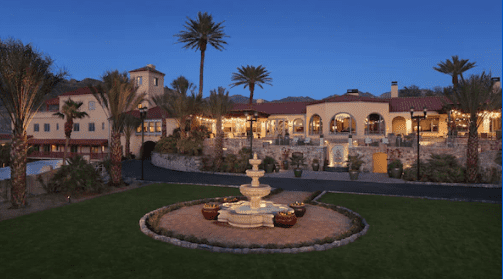
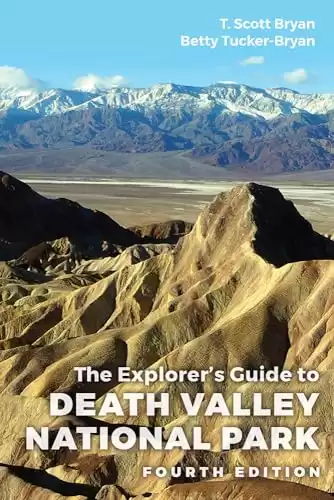
12 Comments
Comments are closed.